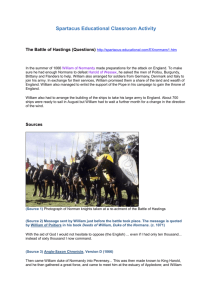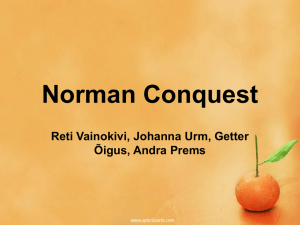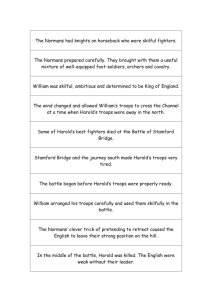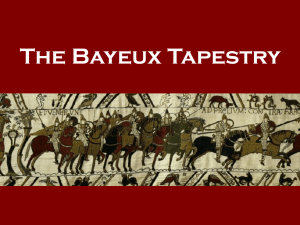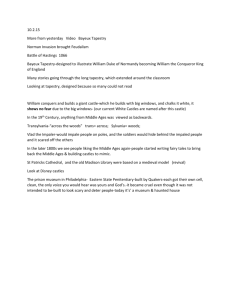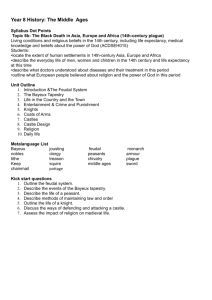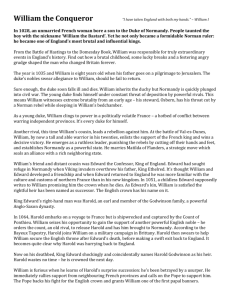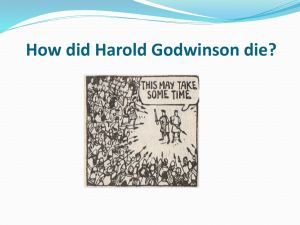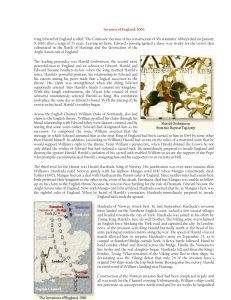Bayeux Tapestry - Toorak College Blogs
advertisement
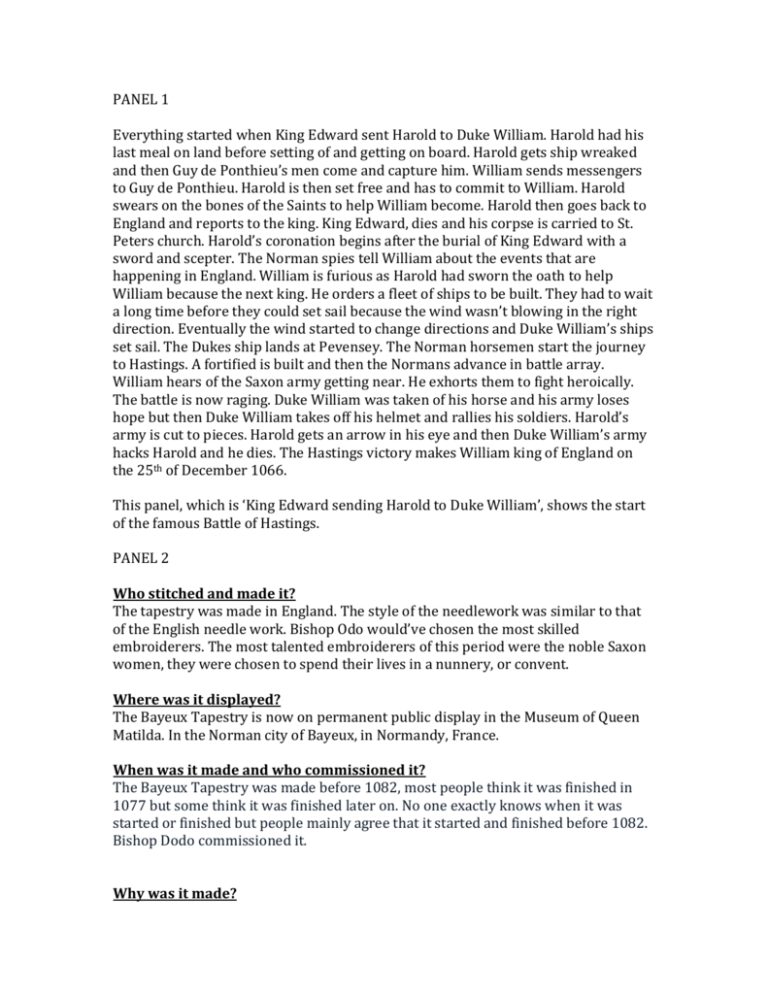
PANEL 1 Everything started when King Edward sent Harold to Duke William. Harold had his last meal on land before setting of and getting on board. Harold gets ship wreaked and then Guy de Ponthieu’s men come and capture him. William sends messengers to Guy de Ponthieu. Harold is then set free and has to commit to William. Harold swears on the bones of the Saints to help William become. Harold then goes back to England and reports to the king. King Edward, dies and his corpse is carried to St. Peters church. Harold’s coronation begins after the burial of King Edward with a sword and scepter. The Norman spies tell William about the events that are happening in England. William is furious as Harold had sworn the oath to help William because the next king. He orders a fleet of ships to be built. They had to wait a long time before they could set sail because the wind wasn’t blowing in the right direction. Eventually the wind started to change directions and Duke William’s ships set sail. The Dukes ship lands at Pevensey. The Norman horsemen start the journey to Hastings. A fortified is built and then the Normans advance in battle array. William hears of the Saxon army getting near. He exhorts them to fight heroically. The battle is now raging. Duke William was taken of his horse and his army loses hope but then Duke William takes off his helmet and rallies his soldiers. Harold’s army is cut to pieces. Harold gets an arrow in his eye and then Duke William’s army hacks Harold and he dies. The Hastings victory makes William king of England on the 25th of December 1066. This panel, which is ‘King Edward sending Harold to Duke William’, shows the start of the famous Battle of Hastings. PANEL 2 Who stitched and made it? The tapestry was made in England. The style of the needlework was similar to that of the English needle work. Bishop Odo would’ve chosen the most skilled embroiderers. The most talented embroiderers of this period were the noble Saxon women, they were chosen to spend their lives in a nunnery, or convent. Where was it displayed? The Bayeux Tapestry is now on permanent public display in the Museum of Queen Matilda. In the Norman city of Bayeux, in Normandy, France. When was it made and who commissioned it? The Bayeux Tapestry was made before 1082, most people think it was finished in 1077 but some think it was finished later on. No one exactly knows when it was started or finished but people mainly agree that it started and finished before 1082. Bishop Dodo commissioned it. Why was it made? The Bayeux Tapestry was made to congratulate the victory of King William’s win over Harold. The Normans took the victory. Whose point of view was it from, whose side does it glorify and therefore can we believe it all? It is from the Normans point of view, because they won it and they ordered it to be made. It glorifies the Normans and because of that we cannot believe everything that is on there. Some things could have been twisted to make King Edward happy. The Normans probably made the Saxons look weaker and because of that we can’t believe everything the Bayeux Tapestry says. The Bayeux Tapestry is a Secondary source because they weren’t there on the battlefield, the Bayeux tapestry was made after the battle.
